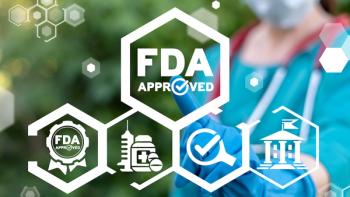
FDA Refuses NDA for Cutaneous T-Cell Lymphoma
The FDA indicated that Soligenix’s application for HyBryte, a novel photodynamic therapy, was incomplete.
FDA has
Regulators indicated the application was incomplete.
“We are fully determined to work with the FDA staff as quickly as possible to better understand the open issues and clarify the potential path to successfully resubmitting our application,” Christopher J. Schaber, Ph.D., president and chief executive officer of Soligenix, said in a press release.
Soligenix had submitted its NDA in December 2022. HyBryte is a novel photodynamic therapy. The active ingredient is synthetic hypericin, a potent photosensitizer that is topically applied to skin lesions that is taken up by the malignant T-cells, and then activated by visible light about 24 hours later.
In the phase 3 FLASH trial, which was
The study enrolled a total of 169 patients (166 evaluable) with Stage IA, IB or IIA cutaneous T-cell lymphoma. For the second open-label treatment cycle, all patients received HyBryte treatment. This cycle evaluated 155 patients, including 110 who had previously received 12 weeks of HyBryte treatment and 45 who had received six weeks of placebo. The response rate among the patients who had previously received 12 weeks of treatment was 40%. Comparison of the 12-week and six-week treatment groups also revealed a statistically significant improvement between the two groups. Additional analyses also indicated that HyBryte is equally effective in treating both plaque and patch lesions of cutaneous T-cell lymphoma.
About 66% of patients in cycle two continued to cycle three, which was focused on safety. Of the subset of patients that received HyBryte throughout all three cycles of treatment, 49% of them demonstrated a positive treatment response. In the patients evaluated in this cycle, it was demonstrated that HyBryte is not systemically available, consistent with the general safety of this topical product observed to date. At the end of cycle three, the therapy continued to be well tolerated.
Newsletter
Get the latest industry news, event updates, and more from Managed healthcare Executive.

















































